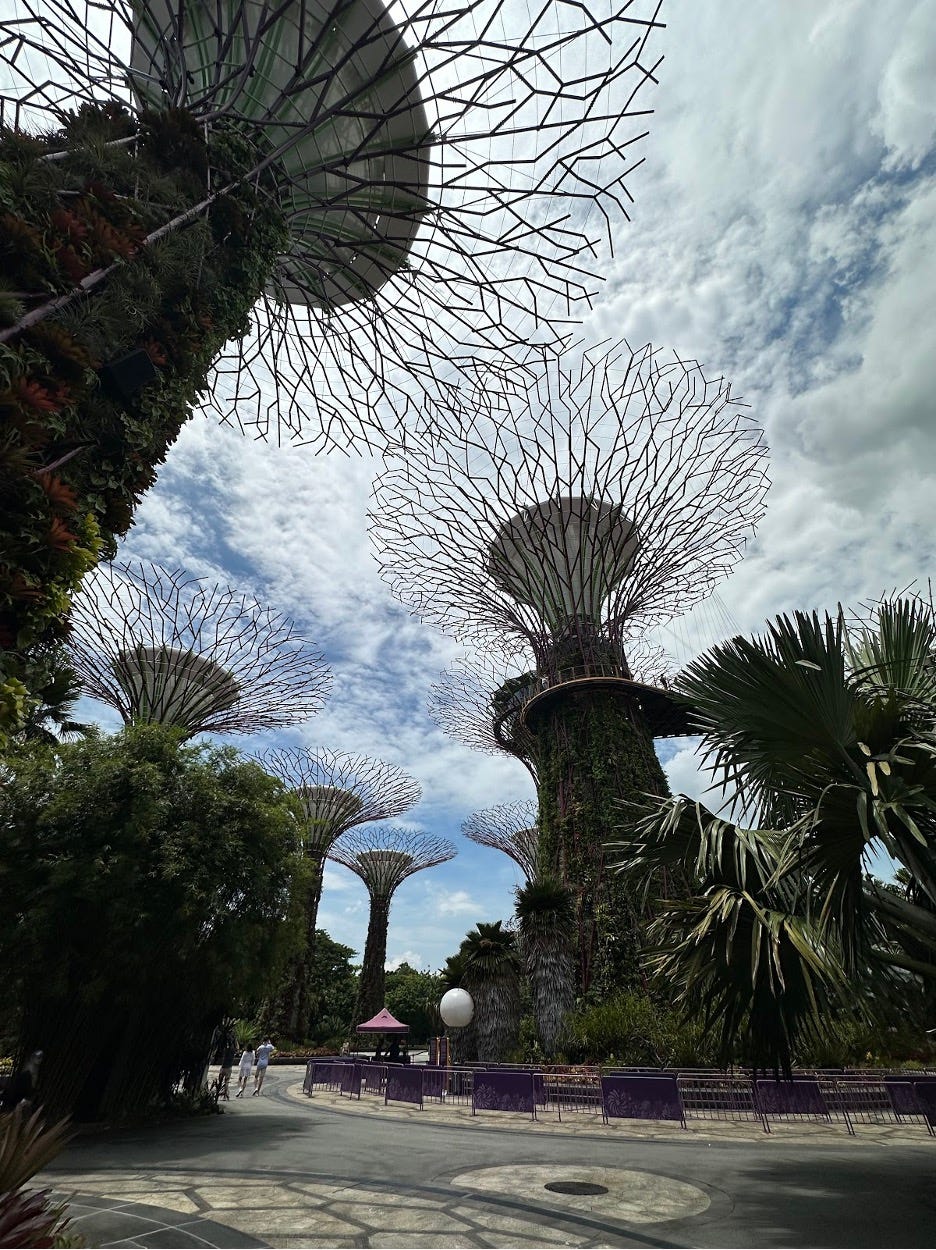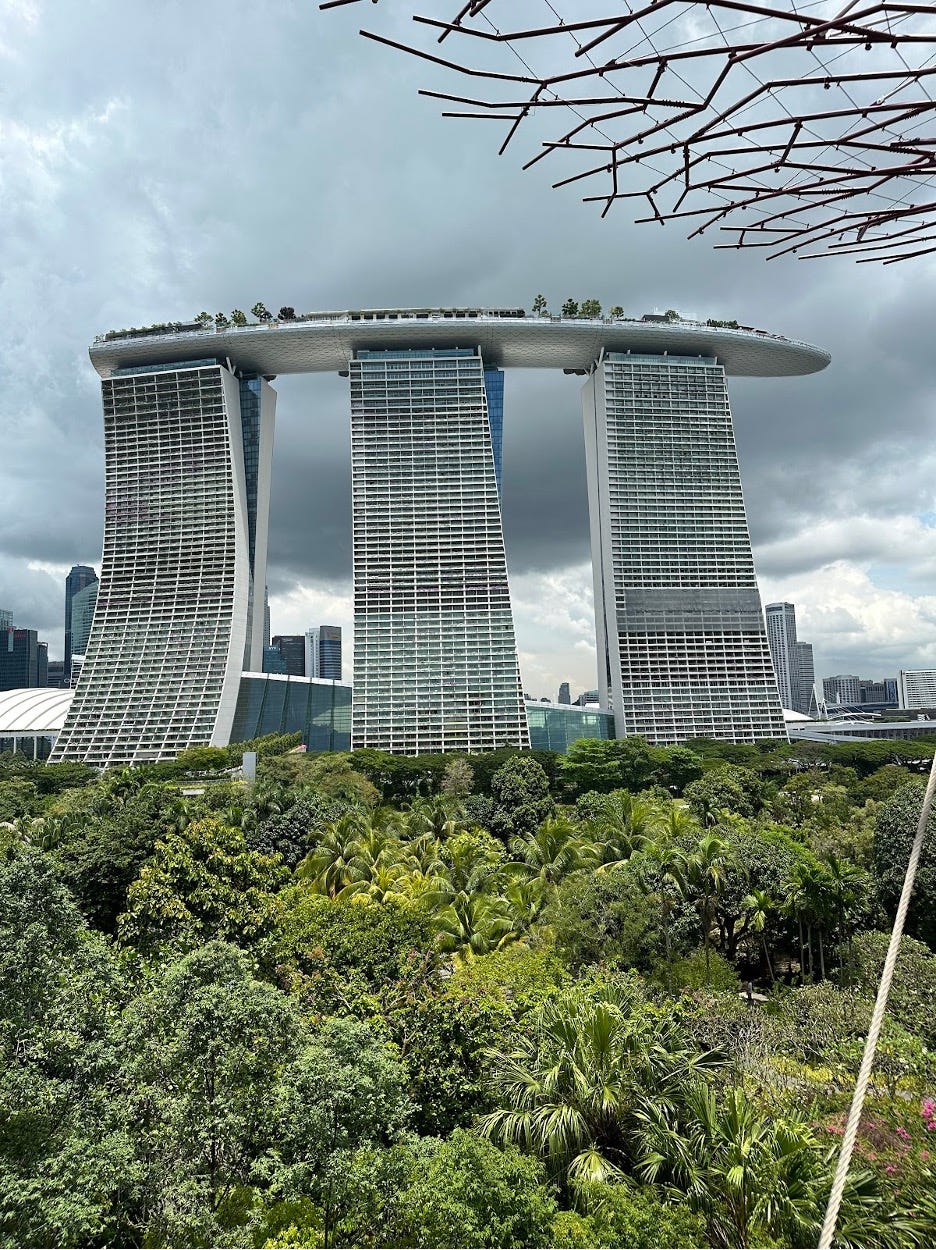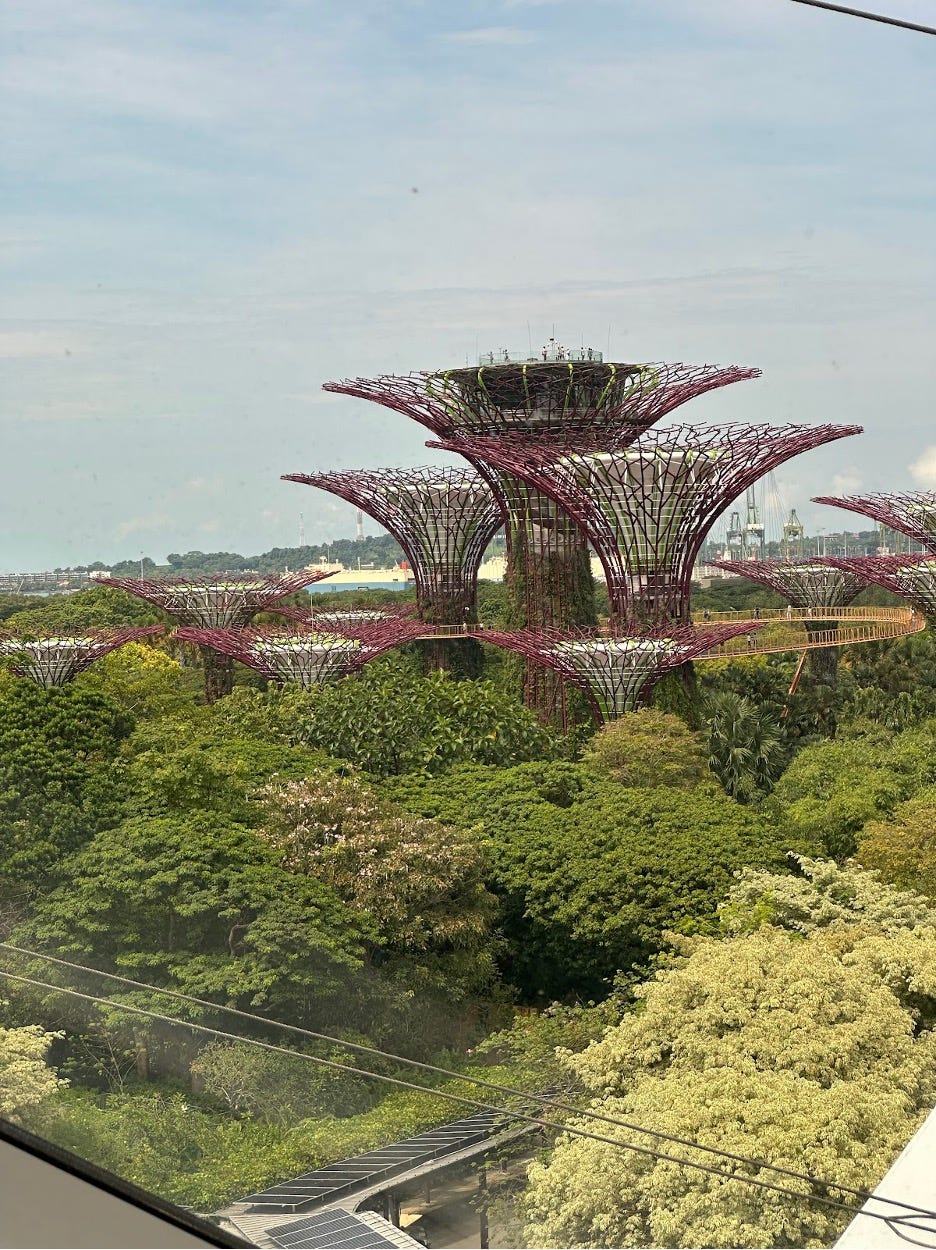It’s been a few days since I’ve been to Singapore, and for some reason that city comes back to my mind with its characteristics and contradictions. It is a very clean, very tidy, very organised, very controlled, very advanced city. It is so perfect that I always had the impression that I was doing something wrong, as if the rules were different from the ones I gave myself. So perfect as to be disturbing, not suitable for an improviser like me. It’s just the kind of city we imagined in the past and wished all cities in the world could be transformed like that. Skyscrapers for offices, skyscrapers for residences, old colonial streets, a residential district with villas and gardens, a large waterfront with beautiful public spaces. Singapore is famous for being a city-state where, as in all city-states, there is little space and public administrators, private entrepreneurs, real estate companies and citizens try all possible tricks to make the best use of space. The city is looking for space by nibbling at the sea and one of the biggest recent developments is the Marina Bay area, where Marina Bay Sands, a large complex with flats, hotels, restaurants, amenities and exhibition centres, is located.
Singapore has the most beautiful apartment buildings in the world. They are apartment buildings, built at state expense, extraordinary, both for the quality of the work itself, and for the quality of the architecture, never banal, never mediocre, never shabby as we are used to think of for council housing. They are always ambitious projects with a highly evolved image, quite comparable to that of the luxury buildings of big business. Underlying this is another equally ambitious project, perhaps even more so, which is to create the people of Singapore. Singapore’s population is actually made up of different ethnic groups, mostly Chinese but also Indian, Malaysian, Thai, Indo-Chinese, Filipino. In between there are also a few Western individuals. I imagine the idea is to mix the backgrounds, add a splash of Westernism, and create a typical and possibly proudly Singaporean ethnicity. These popular ‘palaces’ are meant not only to make the city beautiful, but also to convince citizens to live with different cultures, different habits, different languages. Convincing them that diversity is not only a beautiful, pleasant, seductive quality, but also a vital one.
But the thing that struck me most in Singapore is the relationship with nature. Here, nature is not only luxuriant, as in all tropical countries, it is not simply the well-kept context of a very sophisticated urban environment, it is not only the decoration of public and private gardens, but it is the attractive element. In Singapore, there are no historical palaces of value, no museums of antiquities or internationally recognised museums of contemporary art, no extravagant monuments of strong identity, except for the vaguely Disneyesque Marina Bay Sand. Here, it is nature that attracts visitors and tourists. It is the old botanical garden, the two greenhouses of the Garden by the Bay and, above all, the artificial trees made of iron tubing covered with moss and anti-pollution plants above which one can even climb and walk along the panoramic walkway through the foliage. At night they turn a thousand colours and during the day they soar in the middle of the tropical forest.
They are not beautiful but very impressive and, above all, significant. This cluster of tubes, which poorly resembles tree branches where no bird would dare to perch, are a unique achievement, the likes of which I have never seen, of a technological simulation of nature adapted to serve the environment. Here, nature becomes the attraction and guide for the development of a technological and sustainable environment, as many dream of. I do not know if this will be possible. It does not work yet, but the idea that it could work is fascinating and reassuring, if only and simply because it allows us not to stop the process of exploration and research that is the essence of our civilisation’s evolution. After all, I don’t think we can exempt ourselves from evolving and using nature as a model is the most sensible thing of all and the only thing possible.
In Singapore, biodiversity is at the centre of all efforts to create a new and virtuous awareness of nature and peace. Biodiversity is not only a vital feature but is the foundation of technological evolution and social coexistence, as the wonderful people’s palaces, inhabited by people from very different backgrounds and cultures, can show us.
シンガポールを訪れてから数日が経ちますが、その都市の特徴と矛盾がなぜか私の頭に浮かびます。とても清潔で、整然としており、システム化され、管理され、先進的な都市です。あまりにも完璧なため、いつも何か悪いことをしているような気がしました。まるで自分自身が課したルールとは異なるルールがあるかのように。完璧すぎて落ち着かない、私のような即興主義者には向かない都市です。かつて私たちが想像し、世界のすべての都市がそうなることを望んでいたような都市です。オフィスビル、高層住宅、旧植民地時代の街並み、ヴィラや庭園のある住宅街、美しい公共スペースのある広大なウォーターフロント。シンガポールは都市国家として有名であり、他の都市国家と同様に、国土が狭いことから、公共管理者、民間企業、不動産会社、そして市民は、限られたスペースを最大限に活用するためにあらゆる工夫を凝らしています。この都市は海を埋め立ててスペースを確保しています。中でも最近開発された最大のエリアのひとつがマリーナ・ベイ地区です。この地区には、住宅、ホテル、レストラン、アメニティ、そして展示センターを備えた大型複合施設、マリーナ・ベイ・サンズがあります。
シンガポールには世界で最も美しいアパートメントビルがあります。これは国家予算で建てられたアパートであり、その仕事自体の質、建築の質ともに並外れていて、決して平凡でも非凡でもなく、私たちが公営住宅に対して抱くようなみすぼらしさもありません。非常に野心的なプロジェクトであり、高度に進化したイメージは、大企業の豪華なビルと比較しても遜色ありません。その根底には、シンガポール国民を創り出すという、これと同じく野心的なプロジェクトがあります。おそらく何より野心的なプロジェクトです。シンガポールの人口は、実際にはさまざまな民族から構成されており、主に中国系、インド系、マレー系、タイ系、インドシナ系、フィリピン系の人々で占められています。その間には少数の西洋人もいます。私はさまざまな背景を混ぜ合わせ、西洋の要素を少し加え、典型的なシンガポール人の民族性を生み出すという考え方があるのではないかと想像しています。この人気の「宮殿」は、街を美しくするだけでなく、市民に異なる文化、異なる習慣、異なる言語とともに暮らすよう説得する意味もあります。多様性は美しい、心地よい、魅力的な性質であるだけでなく、不可欠な性質でもあると彼らを説得するのです。
しかしシンガポールで最も印象的だったのは、自然との関係です。ここでは自然が単に熱帯の国々にあるような豊かなものではなく、非常に洗練された都市環境の整えられた背景でもなく、公共や個人の庭園の装飾的なものでもなく、魅力的な要素なのです。シンガポールには、ディズニーランドのようなマリーナ・ベイ・サンズを除いて、歴史的価値のある宮殿や古代の博物館、国際的に認められた現代美術館、強いアイデンティティを示す贅沢なモニュメントなどはありません。ここでは自然が観光客や旅行者を惹きつけています。それは古い植物園、ガーデン・バイ・ザ・ベイの2つの温室、そして何よりも苔や公害防止植物で覆われた鉄管製の人工樹木です。その上を登ったり、木々の間を通るパノラマ遊歩道を歩いたりできます。夜にはさまざまな色に輝き、昼間には熱帯雨林の真ん中にそびえ立ちます。
それらは美しくはありませんが、非常に印象的であり、何よりも意義深いのです。鳥が止まろうとしない木の枝に似たチューブの集合体は、環境に適応した自然のテクニカルシミュレーションという点で、私がこれまでに見たことのない類を見ない偉業です。ここでは多くの人が夢見るように、自然がテクノロジーと持続可能な環境の発展のための魅力と指針となっています。これが実現可能かどうかはわかりません。まだ実現はしていませんが、実現できるかもしれないという考えは魅力的で心強いのです。文明の進化の本質である探求と研究のプロセスを止める必要がなくなるからです。結局のところ、私たちは進化から逃れることはできないし、自然をモデルとして利用することは最も理にかなったことであり、唯一可能なことなのです。
シンガポールでは、生物多様性が、自然と平和に対する新たな、そしてより良い意識を育むためのあらゆる取り組みの中心となっています。生物多様性は、単に重要な特徴であるだけでなく、異なる背景や文化を持つ人々が共存する素晴らしい「ピープルズ・パレス(人民の宮殿)」が示すように、技術の進化と社会の共存の基盤でもあります。



